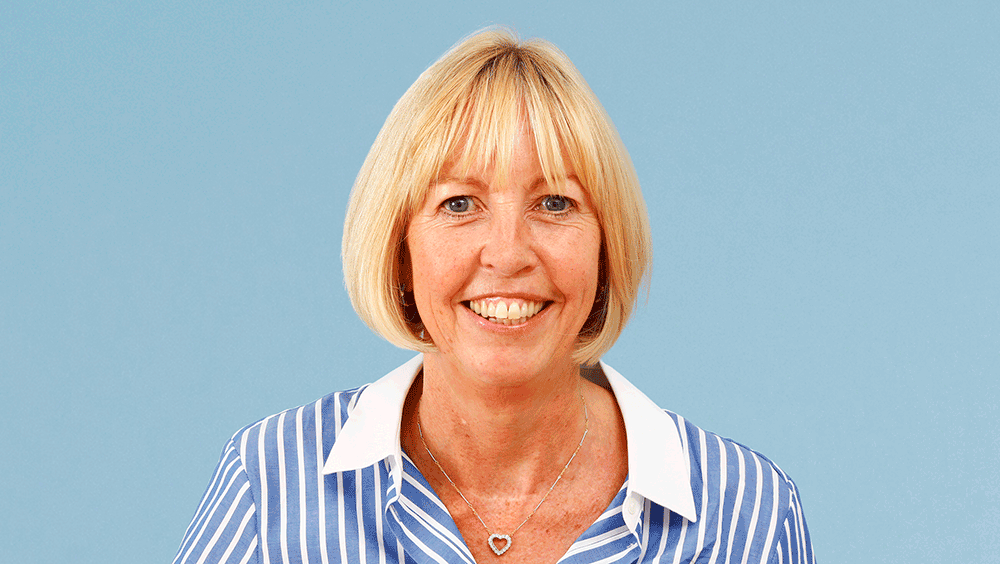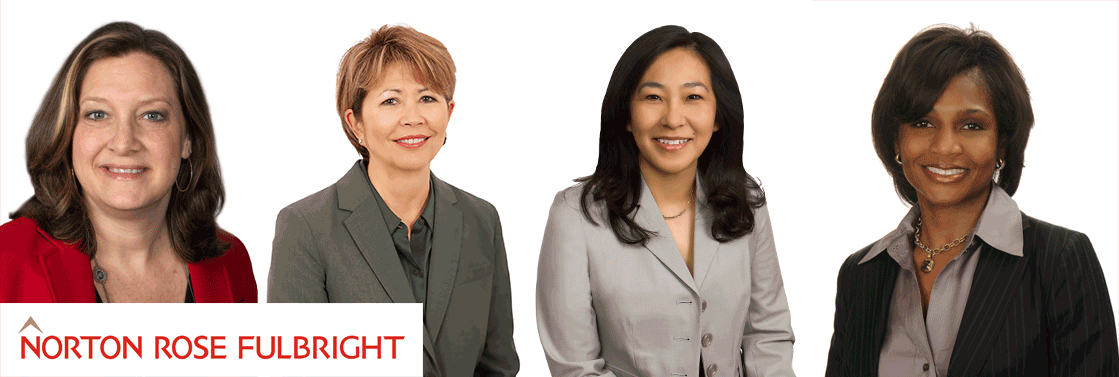I am a legally blind lawyer. I never thought I would say that! When I was growing up, I wanted to be a marine biologist but, sadly, chemistry was not my strong suit. After high school, I was unsure of my next move and fell into a legal secretary position at MinterEllison while I was figuring out what tertiary degree to study. To be honest, studying law never crossed my mind.
My early days at MinterEllison were a lot of fun and the study plans soon fell by the wayside. It was also during those days that I met, and worked for, my now-husband, Craig! And, back then, I could see.
I spent three years at the firm before moving to a secretarial role at Corrs Chambers Westgarth. After a year there, Craig and I got engaged while holidaying in France, and we returned home to begin a new chapter of our lives, relocating to Potts Lawyers on the Gold Coast. Little did we know, our lives were about to take an incredible turn.
I was driving home from a friend’s wedding when I asked Craig to clean the smudge off the glasses that I occasionally wore when driving. Oddly, the smudge kept reappearing and once we had returned home, I realised the smudge was in fact a problem with my right eye. I did not think much of it, believing I was simply tired from a long day.
The next morning, however, a complete fog had descended in my right eye, and I could not see. It was dark, and painful on movement. At that time, retail trading on a Sunday was unheard of, so I painstakingly waited another day before I visited my local optometrist. In hindsight, I should have gone straight to the hospital.
The optometrist performed many tests – all of which I failed miserably – and arranged an ophthalmologist to consult with me that same day. I realised then the seriousness of my blurry eye and the worry increased. Unfortunately the ophthalmologist did nothing to quell my nerves and on review of my right optic nerve, he told me I likely had one of two conditions – Multiple Sclerosis (MS) or a brain tumour. Naturally, I was distraught.
My mother had been diagnosed with a brain tumour when I was just 12 years old. And so, while I ignorantly believed that all people suffering from MS were wheelchair-bound, I was almost hoping for an MS diagnosis. I did not want to go through the battles my mother had.
I underwent an MRI and consulted with a neurologist the following week. That week-long wait for answers was terrifying, and recalling the turmoil of that period in my life is heartbreaking to this day. While I have done my utmost to press forward with my life, unknowingly I have suppressed these emotions. It truly was traumatic.
I was cleared of a brain tumour, and placed on steroids to try to reduce the inflammation of my optic nerve and regain my eyesight. I was told that 50% of patients experience just one episode of optic neuritis. The other 50%, who suffer recurrent episodes, are generally later diagnosed with MS. I felt hope that there was a decent chance of recovering from this.
Fast forward six weeks – just before Christmas in 2008 – I had another episode of optic neuritis, but this time in my left eye. By January 2009 I was diagnosed with MS. I was given higher-dose steroids to reduce the inflammation in my left optic nerve, and injections every other day to try to temper the autoimmune condition.
Over the next two years I see-sawed with recurrent episodes of optic neuritis, had numerous week-long hospital stays for intravenous steroids, and trialled many MS medications. My neurologist referred me to a specialist MS neurologist who then took me off all MS medications and trialled plasma exchange therapy. This was a particularly tough period in my life, as a catheter was inserted via my jugular into my heart, and I was hooked up to a dialysis machine that would strip the plasma from my blood and replace it with synthetic plasma.
The treatment did not work. A few weeks later, I had another episode of optic neuritis which pushed me over the edge into legal blindness.
At this point, my new neurologist expected I was misdiagnosed and likely had a rare autoimmune condition known as Devic’s Disease. He placed me on an experimental immunotherapy treatment, of which I believe I was just the second reported case study in Australia. The experimental treatment was not without serious risks of brain infection and death, as it was a form of chemotherapy usually used to treat Non-Hodgkins Lymphoma.
Today, almost nine years on, my vision has stabilised without any further episodes of optic neuritis since being on the ‘experimental’ treatment. I am very lucky. While I am legally classified as blind, I am not totally blind. I liken my vision to a sighted person jumping in the pool without goggles. I can still see silhouettes and objects, albeit blurred, but I am also colour deficient, and have limited peripheral vision.
With my vision not further deteriorating, I have been able to slowly recuperate from all the rigorous medical treatments and, ever so slowly, the emotional trauma too. It’s been important for me to maintain normalcy in my life, and in the beginning I continued to work part time throughout my treatment – mainly for my own sanity, and to have something to draw my attention away from being sick. Over the years, I returned to full-time work, advanced to a paralegal level, and was relatively content with my life. Looking back now though, I realise I lacked confidence and was reluctant to plan a long-term future for myself, especially when it came to contemplating my career.
Living life to the fullest
When I first became blind, my husband and I consulted a psychologist and developed mechanisms to help us adjust and adapt to our new life living with disability. Perhaps his greatest advice was to live my life with as little regret as possible and to focus on all the things I wanted to see, do, and accomplish while I still had the capabilities to do so.
The first thing I did was to start fundraising for people living with MS and Devic’s Disease. My husband encouraged me at every opportunity, realising the therapeutic importance for me to actively participate in events to advance awareness of these autoimmune conditions, and to fundraise for much needed research and resources for patients. Over several years, through various half-marathons and swimathons, we raised (along with family and friends) over $100,000 for MS charities. Along the way, we picked up several awards for Highest Fundraising Individual, Highest Fundraising Team, and Most Laps Swum.
As a result of our fundraising efforts, I received a Go for Gold Scholarship from MS Australia in 2012, which I utilised to fulfil a cake decorating dream. I was then recognised by His Excellency The Honourable Paul de Jersey, Governor of Queensland (and former Chief Justice of the Supreme Court of Queensland) as MS Queensland’s 2015 Young Person of the Year, and again in 2018 as one of the 60 Most Influential People in MS Queensland’s 60 Year History.
The second thing I turned my attention to was travel, for fear that I would continue to rapidly lose my eyesight and be unable to see the beauty of the world. My husband and I prioritised annual overseas adventures, gradually ticking off the bucket-list destinations: London, Paris, Italy and the Mediterranean, and New York. We did star gazing at Uluru; safari in the Serengeti; and swimming with whale sharks in the Maldives, seals in the Galapagos, stingrays in the Caymans, and dolphins, turtles, and rays in Hawaii.
In 2015, I caved in to one of my husband’s desired destinations despite having reservations – trekking the Inca Trail to Machu Picchu. In hindsight, I had no idea what I was in for. I vividly remember it raining, and having to trek down the slippery rock-formed ‘stairs’ of Dead Woman’s Pass, all the while frantically sucking in the air for any slither of thick oxygen. Gasping for breath and with incredibly foggy vision, I navigated this portion of the trail on my backside… but I did it, I got there!
Despite being the youngest travellers in our small group – which included adventurers in their 50s and 60s – we were always the last ones to arrive at camp. On the final night, I eventually confessed my condition to our fellow travellers and they did not believe me at first. I had relied heavily on walking sticks but people just assumed it was because I could not handle the altitude, having only trained at sea level on the Gold Coast. (This was partially true!)
I returned home from this adventure with an incredible sense of achievement – I had surprised myself with my determination to reach our destination. The very next week I accepted MS Queensland’s Young Person of the Year award at a Government House reception. Feeling on top of the world, I allowed myself to contemplate a future.
Planning for a future
As a paralegal at Potts Lawyers, I had developed a friendship with a personal injuries barrister who we briefed regularly (now His Honour Judge Nathan Jarro of the District Court of Queensland). We met when I was first diagnosed and Judge Jarro held a genuine interest in my wellbeing, always listening and offering kind words of encouragement. Judge Jarro saw beyond my illness and disability, and realised a potential in me that I could never fathom. The same can be said for my husband. For years, Craig and Judge Jarro had relentlessly enquired as to why I was not studying law, and I did not have the courage to tell them that I felt I could not pursue a future for myself because I did not know whether a sustainable future existed. At that time, not much was known about Devic’s Disease and the common prognosis was that within five years I would become totally blind, paralysed, or both. After all the years of encouragement and support from my husband, family, and colleagues, I finally believed that perhaps I could have a ‘normal’ life, study law, and eventually become a lawyer.
It was not without its difficulties however. I continued to work full-time as a paralegal, and required annual immunotherapy treatment (becoming incredibly fatigued for months when I am due for the next dose), all the while studying at night and on weekends. While my autoimmune condition was relatively stable, I contracted Mumps as a consequence of being immunosuppressed and unable to have live vaccines. Most concerning, however, was that my Mum’s brain tumour – which had remained dormant for 13 years following her initial course of radiation – started to grow again.
Over the next five years, my Mum had a craniotomy to debulk the tumour, four more rounds of week-long (sometimes weeks-long) radiation, two courses of oral chemotherapy, and tried every natural therapy she could. In 2016, she was given a 4–6 week terminal prognosis.
Mum outlasted her terminal prognosis by three and a half years. That is the measure of her incredible strength and willpower. She had personal goals. She was determined to see me graduate from law school. Mum was admitted to palliative care while I was undertaking my final exams. She received in-home care for a short period and while extremely sleepy and heartbreakingly losing her physical abilities, including becoming totally blind herself, she was alive when I finished my very last exam and she was able to tell me how proud she was of my achievement.
I have never met anyone with the same courage, tenacity, and strength of conviction to withstand such a horrible slow deterioration, just so she could be with her family and support us as we so needed. My Mum is my hero, and if I can be just half the person she was, then I will be incredibly lucky.
Less than a fortnight after Mum’s funeral, I started Practical Legal Training at the College of Law and five months later was admitted as a solicitor. It was a bittersweet moment.
I have always held an interest in personal injury law as my life has given me the experience of learning how to adapt to unfavourable and unforeseen circumstances, and has ultimately instilled a drive to help people navigate through their newfound lifestyle.
It was not until recently, however, that I gained the confidence to stand up for my disability. These past couple of years, I have applied for career development opportunities and despite being well qualified and experienced, I did not receive a single interview. A friend who works in public relations and marketing cautioned me from the outset and advised me not to disclose my disability in my resume. Naively, I ignored her advice.
The legal profession parrots the importance of candour, and prides itself on promoting equity and diversity, but not everyone in the industry subscribes to these beliefs. To this day, there remains a misconception that people living with a disability are not capable of performing to the same standard as abled people. This stigma is unwarranted, and because of it, there is a reluctance amongst colleagues to own their disability for fear of reprisal, bullying, or exclusion.
For the most part I am fortunate to have received a lot of support and encouragement within the legal industry. Disappointingly, though, I have come across people who have actively excluded me. I cannot be sure why, but I assume they might perceive it too difficult to deal with my disability and make modifications to include me in their plans.
The constant battle and hurt has consumed me in the past, and is still somewhat difficult to silence even now. I cope by turning my attention to those colleagues who are willing to see my potential and look beyond my disability, instead choosing to embrace and concentrate on my abilities.
Realistically, with modifications to suit our varying needs, people with a disability can achieve and succeed. In fact, we are often more grateful for the opportunities rarely granted to us that we strive harder to earn the respect of our colleagues. My disability has given me the great advantage of being able to adapt quickly, and has also gifted me a fierce determination to succeed in whatever I do.
“With modifications to suit our varying needs, people with a disability can achieve and succeed. In fact, we are often more grateful for the opportunities rarely granted to us that we strive harder to earn the respect of our colleagues”
My remaining senses have certainly fine-tuned over the years since becoming blind. I have most particularly developed keen hearing and a wonderfully retentive memory, and my taste and touch have improved too. I have also developed a sixth sense: having a greater level of emotional intelligence and empathy, which is something every lawyer needs!
Sidelining disabilities
Despite now being blind for almost nine years, I have been extremely reluctant to outwardly expose my disability in a professional setting (aside from my immediate environment) and had never publically used my cane until just last month. Late last year, I was fortunate to catch up with Judge Jarro, and as were walking to our destination we were confronted with council works on the sidewalk. He helped me navigate the temporary footpath and ever so kindly suggested I should consider getting myself a cane. We have been friends for over a decade yet even he didn’t know that I secretly had a cane collapsed and hidden in my handbag.
Following my admission as a lawyer and over the festive season just passed, I trawled through legal industry websites spanning a range of jurisdictions and realised there was very limited support for lawyers living with a disability. There is a strong focus on gender equality, cultural diversity, and sexual identity, and I am pleased to see advocates from these minority groups are gaining traction within the legal profession. Sadly, however, disability is seemingly sidelined and left behind. It is unacceptable.
The Law Society in the UK has forged a path with their Lawyers with Disabilities Division, promoting inclusion for anyone with an impairment, advocating for secure work placements and equal opportunities, and lobbying for legislation protecting basic human rights. A couple of States in Australia are on their way to recognising the importance of addressing equality, diversity, and inclusion for disabled legal professionals also.
I am delighted to be a member of a new initiative advanced by the Queensland Law Society this year: the Diverse Abilities Network (currently pending approval as a Committee).
“There is a strong focus on gender equality, cultural diversity, and sexual identity…Sadly, however, disability is seemingly sidelined and left behind. It is unacceptable”
In my discussions with fellow members of the QLS Diverse Abilities Network, I realised closeted behaviour was a common theme amongst other professionals living with a disability. As I listened to similar stories, I recognised there was no need to be ashamed of my vision impairment. The problem is not my disability: it is society’s view of my abilities. Within the profession, people with impairments need to lead by example to destigmatise disability, by displaying the courage to share our stories and experiences, and creating awareness of our diverse abilities.
Ultimately, there is no diversity without disability. It is through education that we can aspire to inclusivity within the profession. There needs to be visibility for disability.
Following the Network’s inaugural meeting, I was inspired to ‘come out’ of the disability closet, and be photographed with my blind cane. It was empowering. I am excited for a profession that truly accepts disability, embraces our diverse abilities, and seeks inclusivity for all.
Day-to-day practice
I am extremely fortunate to have my husband for my boss, and we have the convenience of travelling to work together. Obviously, I cannot drive! Logistically, I am set up with a large 32” monitor and a fully-electric, sit-stand desk to assist with issues that come with straining my neck to see.I have a heavy-duty document stand for brief folders and a magnifying glass paperweight with light, to assist reading documents. Although a strain, I can make out 12-point font with these tools. I have trialled using special assistive technology, but ultimately it is my personal preference to view documents electronically on my desktop, or use the accessibility functions on an iPad.I use an iPhone App called KNFB Reader where I can take a picture of, say, a menu and either magnify the photo, or the App can convert the image to easily readable text, and can also operate Text-To-Speech.
I run ZoomText software on my desktop which allows me to zoom in and out of a section of the screen for easy viewing. It can also operate as Text-To-Speech, but I am a visual learner so prefer the magnifying option.
I am extremely lucky to become blind in the era of smart devices, and to have some sight remaining. I do not need to learn Braille or rely on large print publications. My iPad is my life! It can magnify internet pages with ease, and I can easily download eBooks and increase the font pending my vision needs.
For more information, please get in touch with :
Ashleigh DoRozario, litigation lawyer, Potts Lawyers, Australia




 The spread of the coronavirus gives rise to similar issues globally for employers: these include assessing the risks faced by their staff and professionals whilst at work and developing measures to control such risks, complying with local laws and guidance, identifying how much flexibility employers have to adapt their working arrangements to ensure business continuity, and special measures to protect vulnerable employees.
The spread of the coronavirus gives rise to similar issues globally for employers: these include assessing the risks faced by their staff and professionals whilst at work and developing measures to control such risks, complying with local laws and guidance, identifying how much flexibility employers have to adapt their working arrangements to ensure business continuity, and special measures to protect vulnerable employees.


